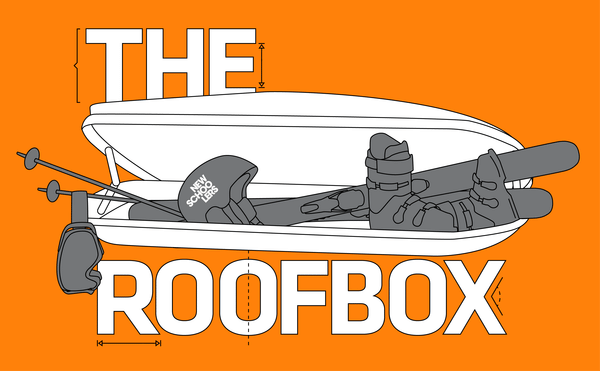
Next up in our series of In Depth reviews is a ski you may have heard of but you probably don't know a lot about. The Wisco is part of RMU's underground collection and until this past season was only available to those in the know. Last season RMU added to Wisco to the site and saw the skis sell out almost instantly. The Wisco is back for 2016 (with a different graphic to the one I tested) and RMU sent me a pair to give you the full lowdown on this most secretive of ski.
Rocky Mountain Underground (RMU) - The Wisco

Ski: RMU The Wisco
Length skied: 172cm
Tip-Tail Length (Straight Tape): 177cm
Shape: 114-120-102-120-114 (5 point shape)
Turn Radius: 15.5m
Core: Full Poplar
Edge: 2.2 x 2.2 mm
Sidewall: Full Milerty Grade UHMW sidewall
Base: World Cup Sintered
Camber/Rocker profile: Rocker / almost flat (very slight camber) / Rocker
Mount: True Center
Binding: Salomon Z12 Speed
Boots: Atomic Waymaker 130, Rossi Allspeed 120, K2 Pinnacle 130 and Full Tilt Descendant 8
Days skied: 30+
Reviewer height/weight: 5'11, 160lbs
Review Location(s): Whistler, BC
Conditions skied: Soft February Powder through to Glacier Ice in the summer
The first thing you will probably notice about the Wisco is it uses a 5 point shape. This 5 point shape has been around for some time and was made popular by such skis as the Armada JJ. More recently the Alpha and BDog skis have used this 5 point shape but there are not many wider all mtn/park skis which utilize the shape.
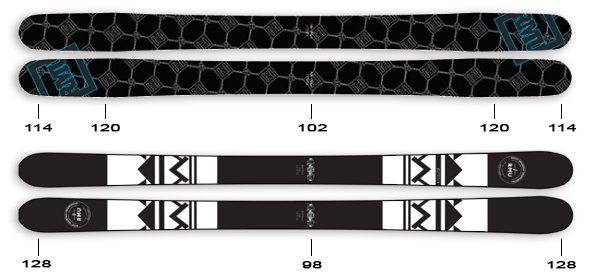
To better understand how a 5 point ski differs from a 3 point shape look at the image above which shows a 5 point sidecut and a more traditional 3 point sidecut. The top image shows the Wisco and the bottom the new Rippah ski. Both skis are symmetrical and use a similar underfoot width but it is in the tips and tails where the change in shape occurs.
In a traditional 3 point sidecut the widest part of the ski is found at the end just before the tip and tail begin to round. On a 5 point sidecut the widest point is brought back towards the center of the ski and the width decreases or tapers towards to tip and tail.
Moving the widest point of the ski back has a number of advantages but perhaps one of the most significant on a ski like this is the reduction in swing weight. Wider park skis are very popular at the moment but going to a wider platform will always increase the weight and thus the swing weight, something less then ideal in a ski still intended for the park
Some manufactures are using lighter weight cores and different materials but this is sometimes done at the expense of durability. Instead by using a 5 point shape, RMU are able to bring the widest and therefor heaviest section of the ski closer to the middle which reduces the overall swing weight without having to sacrifice anything in the construction.
Another feature of the 5 point shape is a short turn radius of 15.6m can be achieved. Usually a wider park ski will have a significantly longer turn radius, for example the On3p Kartel 96 is 19.3m and the Jskis Allplay has a turn radius of 21m. This longer turn radius is great when skiing longer turns but can limit how agile and maneuverable a ski can feel.
The Wisco's turn radius is closer to that of a true park ski (Salomon NFX 15.9m or On3p FR 17.8) and does mean although wider underfoot the skis turn and behave much like a narrower park ski.

The rocker profile works with the 5 point shape with the rocker beginning just behind the widest point. The skis narrow or taper toward the tip and tail which along with reducing swing weight also reduces the risk that you will catch an edge when carving in variable snow. The skis are almost flat underfoot with just a tiny amount of camber but for the most part they could be called a flat ski underfoot.
Compared to many of the wider park skis the Wisco has a reasonably stiff flex and this is probably partly due to its flat camber. The flat section underfoot is fairly stiff throughout the length but the rockered section of tip and tail do soften and allow more flex. The tip and tail are an even stiffness so feel very similar weather riding forward or when switch.
You may think this stiffer flex will limit how playful the skis are but the flat camber allows the skis to have a very surfy feel. I personally prefer a stiffer ski with some rocker, I like to push into butters and presses and sometimes I find myself washing out on a softer ski but on the Wisco I could fully commit no matter how fast I was skiing. The Wisco certainly gives you the confidence to push, something I like in an all mtn ski.

A stiffer ski does not have to mean a less playful ski
Some flat camber skis can suffer from a slight lack of pop but this is not the case with the Wisco. I was finding the pop was equivalent to many true park skis. The stiffer flex maintains a ton and energy and the softer tip and tail really let you power up the core in ollies and nollies. On the groomers the stiffer flex gives you the confidence to push on the edges and although at times I did find the short turn radius limited the types of turns you could achieve but the flat camber allowed the skis to be pivoted and smeared easily and this is how I found myself skiing fast groomers quite often.
The one aspect of testing I was a little concerned with was the deep snow performance. My apprehension was not with the skis ability but more so the sizing. RMU only had a 172 available and although measuring out to 177cm that is still quite short for me. For reference I had been skiing on the On3p Jmo in 186 before getting on the Wisco.
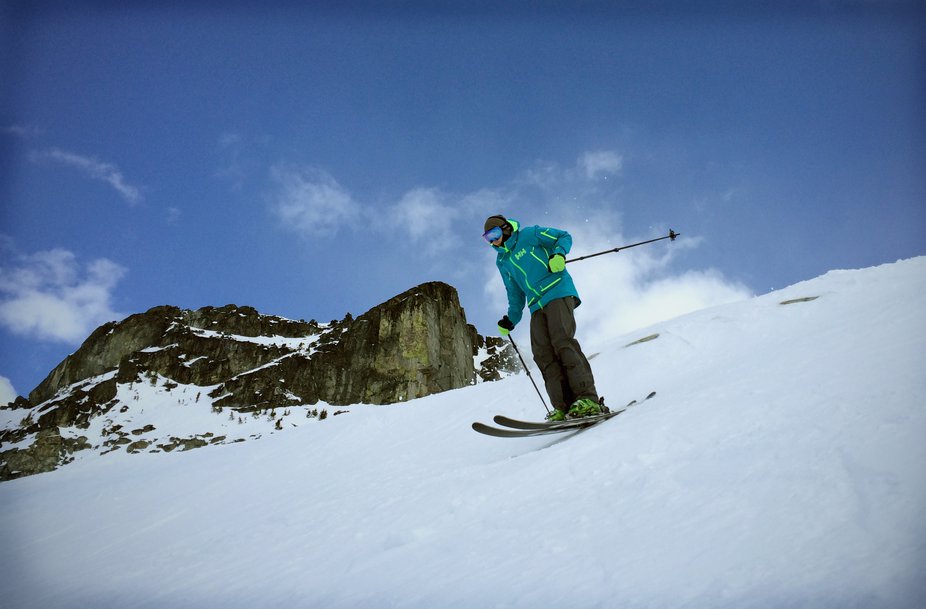
I needn't have worried, in the deep snow when the skis sunk more the tapered tips and tails did a great job stabilizing the skis. Like the sidecut the rocker profile is symmetrical and favors a more upright balanced stance. I still found I was able to drive the skis and this is thanks to again the stiffer flex. I would certainly prefer the 182cm size for deeper snow but the 172 was still stable and offered more then enough float.
The tapered tips help the skis deflect less and even in heavy cut up snow I found I could hold a good line and the skis would not be thrown around. I also found the short turn radius less of an issue in the deeper snow and the skis would more happily do medium to long turns although they still felt although you could throw them sideways whenever you needed which was especially helpful in tighter trees and moguls.
Although I still took my bigger skis out for the really deep days if you wanted a 1 ski quiver then the Wisco will offer an amazing amount of float in a ski which often feels more like a park ski.
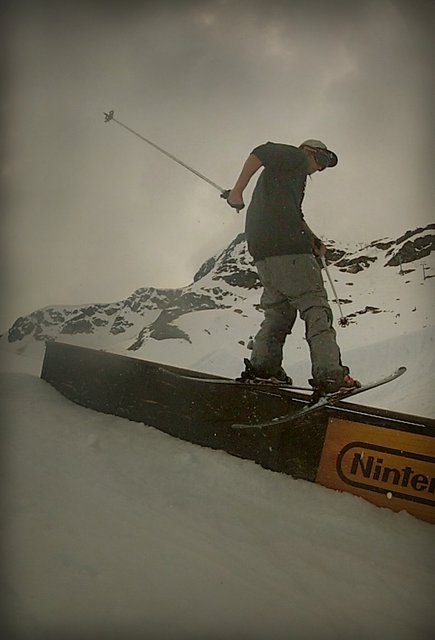
In the park the Wisco continued to impress. As I mentioned at the start the 5 point shape has the effect of reducing the swing weight and for a ski which is 102mm underfoot the Wisco feels like a much smaller ski in the air. Spins are easy to initiate and the tapered tip has the advantage of being less likely to catch getting onto rails.
Although I expected the 172 size to be a little short I actually found them to be perfect in the park. The stiffer flex made landings very stable and I found the wider platform allowed me to get away with more mistakes then I would on a narrower park ski. Even in the spring when the snow was getting very soft the Wisco was great at bouncing through and certainly was a lot easier to ski then a narrower park ski
On rails the wider platform again made things very stable and presses were very easy with the rocker shape. I still find spins and swaps harder then on a park ski but if you are into more surface style tricks the flat camber will give you a lot of confidence that you wont catch.
Carving into jumps felt consistent and as I already mentioned the pop is up there with the best park skis. I would say I probably preferred the Wisco in the park to out on the mountain, but this is mainly due to the size and I think if I had the 182 my opinion would change somewhat.
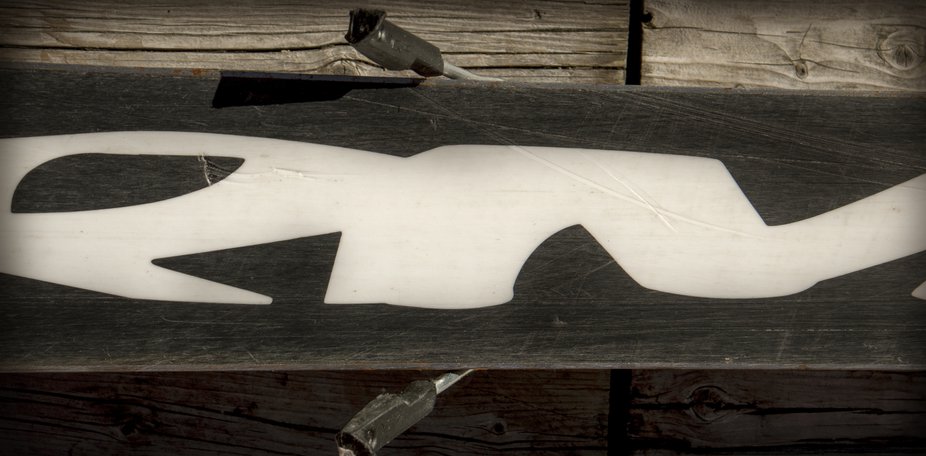
Even after being ridden over anything but snow and getting left up the glacier for a few weeks the bases weren't looking too bad
The overall build of the skis is certainly solid. They use a full sidewall and 2.2mm edges, although not as thick as some on the market they have held up really well. I got no edge cracks and other then where I detuned they look almost new still. One thing I noticed straight away was how fast the bases were. The Wisco has a full sintered base and I can honestly say it is one of the fastest bases I have tested.
Fast bases don't always equate to durable bases though so I decided to put them to the test by hitting every rock and other obstacle I could find. Although sustaining a number of scrapes they held up really well and considering the abuse I was giving them I would expect that you would see a good life from them.
The only other damage sustained during testing was the usual top sheet chipping but considering these are a full sidewall ski the damage was actually very minimal. The overall construction seems extremely good and I would certainly put them up with well respected brands like On3p when it comes to durability.
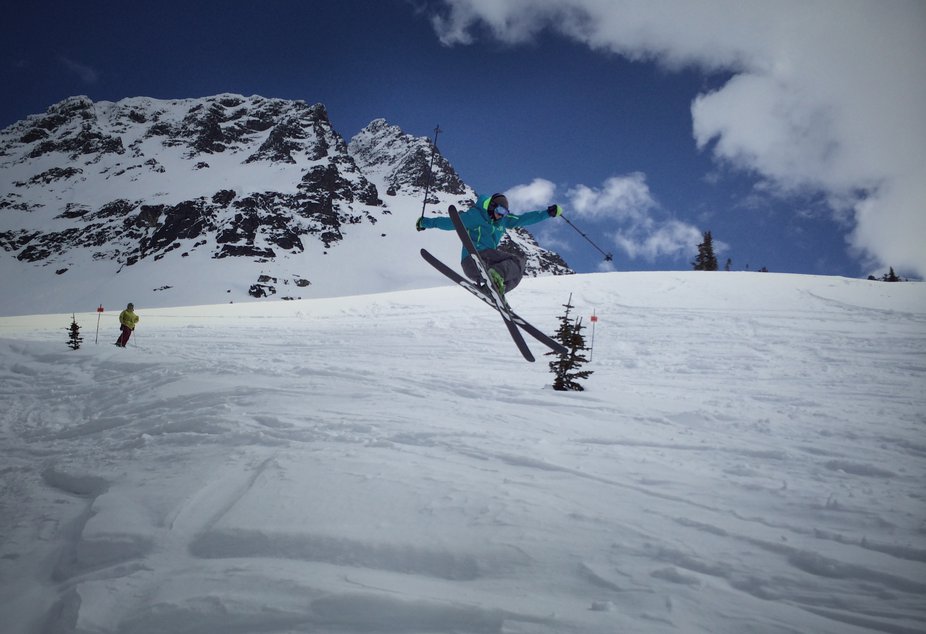
Overall I have been extremely impressed by the Wisco. There is certainly a lot of competition in this style of ski but I do think the Wisco has something unique. They ski differently to the more traditional fat park skis and the versatility is close to unmatched. In the park they feel light and poppy, on the harder snow they turn fast and in the deep snow they feel totally stable and give a nice surfy feel.
The durability has been very good with very little damage throughout my testing. Considering the abuse I gave them I would fully expect them to survive a good couple of seasons of hard riding.
In terms of the sizing I would like to try them in the 182cm size. At 5'11 and 160lbs I did find I could perhaps use more ski at times when I was skiing at speed in deeper snow but the smaller size never really held me back and in the park they actually felt perfect.
If you are considering skis like the K2 Shreditor 102 (which Twig reviewed last week), the On3p Kartel or really any of the other fatter park skis then the Wisco should be on your radar too. Especially for younger and smaller riders having a ski which behaves much like a smaller ski while still offering all the float and stability of a wider ski could be great. If you have tried some of the wider park skis but found them overpowering and heavy then the Wisco may be for you.
If you are looking for something a little different and also like the idea of having a ski not many other people have then check out the Wisco. They are not currently on the RMU site so if you want a pair get in touch with the guys at RMU and see if they fancy selling you a pair and remember first come, first served and remember the first rule of the Wisco, there is NO Wisco.
Have you ridden the Wisco? If so then let your opinion be heard and add a review of your own. The more reviews the better for everyone so any products you like or dislike add a review Here.
If you like the look of any of the other products featured in this article you can check out the reviews below. The Helly Hansen outerwear I'm using is the new 2016 Ullr freeride collection and I am covering it in an upcoming Roof Box article, but for all the rest check the links.
Full Tilt Descendant 8
The Descendant represents an entirely new boot with an all new wider fit. Check out my full review Here or check it out in the review system Here.
Shred Smartefy Goggles
A Favorite of team rider Tom Wallisch the Smartefy not only looks good but performs in nearly all conditions, check out the review Here.
Black Label Project Vintage Hoodie
A quality hoodie will never go out of style and this one from Black Label project is one of my favourites, check it out Here.
Pow Tallac Mitten
The Pow Tallac mitten feature a removeable synthetic inner glove and are perfect for the colder days, check them out Here.
Follow me on Instagram @tompietrowski and keep up to date with what I'm testing

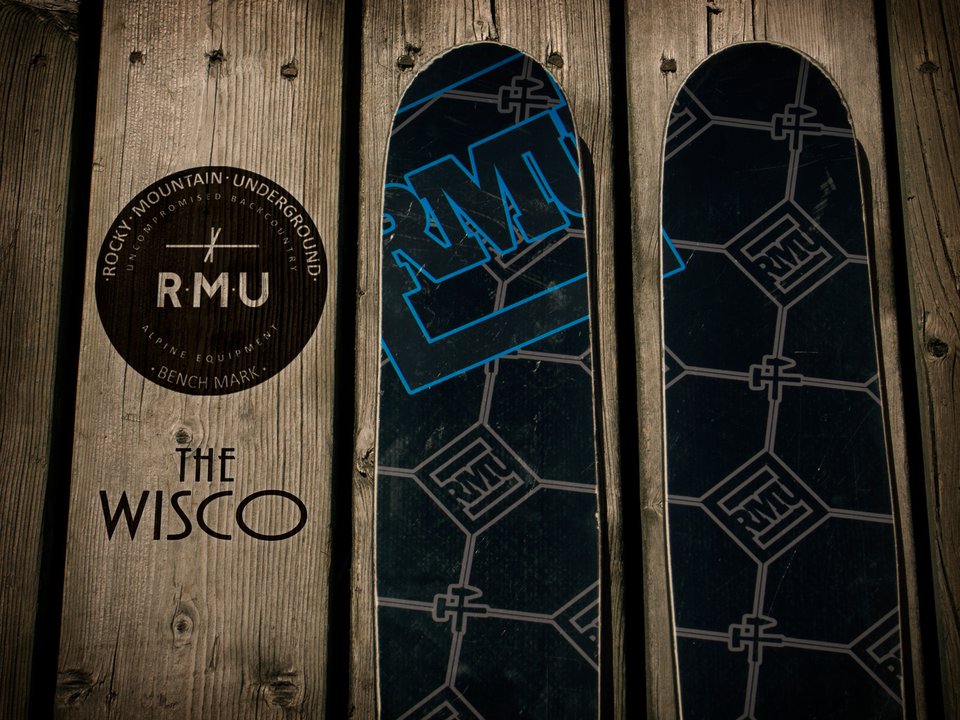
Comments